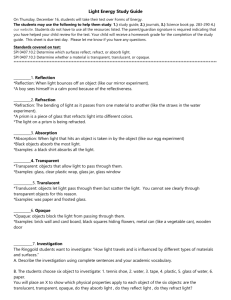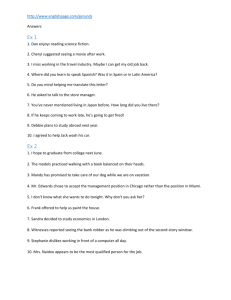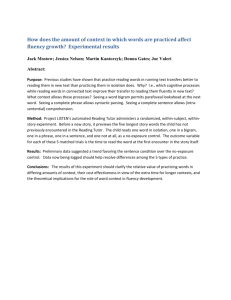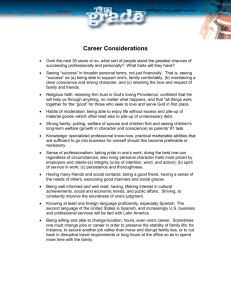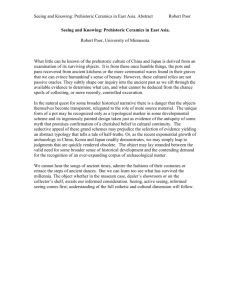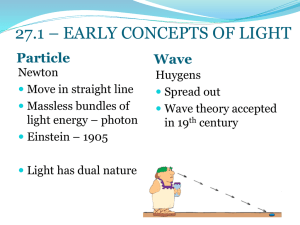Light and Color
advertisement
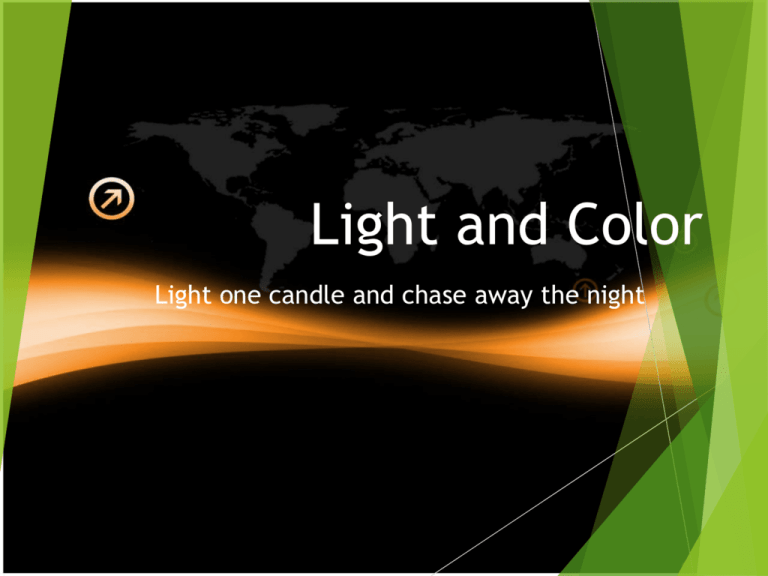
Light and Color Light one candle and chase away the night Electromagnetic Waves Non Mechanical Waves – this means they do not need a medium to carry them. Transverse They They Wave travel through a vacuum work through the electrical and magnetic fields Electromagnetic Spectrum Classification of electromagnetic waves according to frequency No sharp boundary between regions All travel at the same relative speed called the speed of light - c Transparent Materials How light penetrates transparent material such as glass: Transparent Materials Average speed of light through different materials • vacuum—c (300,000,000 m/s) • atmosphere—slightly less than c (but rounded off to c) • water—3/4 c • glass— 2/3 c, depending on material • diamond—4/10 c All EMW travel at the same speed. Transparent So we see that glass is transparent to visible light, but not to ultraviolet and infrared light. Opaque Materials Most things around us are opaque—they absorb light without re-emitting it. Books, desks, chairs, and people are opaque. Vibrations given by light to their atoms and molecules are turned into random kinetic energy—into internal energy. These materials become slightly warmer. Opaque Materials Shadows A thin beam of light is often called a ray. When we stand in the sunlight, some of the light is stopped while other rays continue in a straight-line path. We cast a shadow—a region where light rays do not reach. Seeing Light – The Eye The retina is composed of tiny antennae that resonate to the incoming light. • Rods handle vision in low light. – They predominate toward the periphery of the retina. • Cones handle color vision and detail. – They are denser toward the fovea. – There are three types of cones, stimulated by low, intermediate and high frequencies of light. Seeing Light – The Eye Although our vision is poor from the corner of our eye, we are sensitive to anything moving there. Seeing Light – The Eye The brightest light that the human eye can perceive without damage is some 500 million times brighter than the dimmest light that can be perceived. Lateral inhibition: We don’t perceive the actual differences in brightness. The brightest places in our visual field are prevented from outshining the rest. Seeing Light – The Eye The brightest light that the human eye can perceive without damage is some 500 million times brighter than the dimmest light that can be perceived. Lateral inhibition: We don’t perceive the actual differences in brightness. The brightest places in our visual field are prevented from outshining the rest. Seeing Light – The Eye Seeing Light – The Eye Seeing Light – The Eye Seeing Light – The Eye Seeing Light – The Eye Seeing Light – The Eye Color in Our World Color we see depends on frequency of light. Lowest frequency—perceived as red In between lowest and highest frequency— perceived as colors of the rainbow (red, orange, yellow, green, blue, indigo, violet) Highest frequency—perceived as violet Beyond violet, invisible ultraviolet (UV) Stroop Effect Read the following using the color of the word – not the word itself. Color in Our World Color Physiological experience In the eye of the beholder Selective Reflection Objects reflect light of some frequencies and absorb the rest. • Rose petals absorb most of the light and reflect red. • Objects that absorb light and reflect none appear black. • Objects can reflect only those frequencies present in the illuminating light. Selective Transmission Color of transparent object depends on color of light it transmits. Colored glass is warmed due to the energy of illuminating the glass. absorbed light Mixing Colored Light Additive primary colors: Red, green, and blue Produce any color in the spectrum Mixing Colored Light Subtractive primary colors Combination of two of the three additive primary colors: red + blue = magenta (subtracting green) red + green = yellow (subtracting blue) blue + green = cyan (subtracting red) Mixing Colored Light Only three colors of ink (plus black) are used to print color photographs—(a) magenta, (b) yellow, (c) cyan, which when combined produce the colors shown in (d). The addition of black (e) produces the finished result (f). Why is the sky Blue??? Sun emits white light. Light passes through the atmosphere. Blue light is scattered. Smaller wavelengths scatter the most. No atmosphere means no blue light scattering Sun appears yellow because blue is removed – green/red Why Sunsets Are Red Light that is least scattered is light of low frequencies, which best travel through air. • Red • Orange • Yellow Colors title title Colors title
